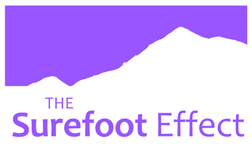|
Euri Bartolome Vidal, Surefoot associate, has spent the past months painting endangered plants and animals in watercolour. Some of the illustrations are printed on organic and fairtrade t-shirts, and donations from sales will go to organisations that protect ecosystems in the Global South. Euri shares the background and inspiration in the creation process. Kindred beings
I wanted to honour the biodiversity we are losing all over the world. I also wanted to make a connection between biodiversity and sustainability and the things we eat, the energy and the things we consume, and how we move around. I have chosen 8 regions and countries and for each of these one "protagonist" species with others around them: - Iberian lynx, Spain - Nama dwarf tortoise, Namibia - Black rhinoceros, Mozambique, Eswatini, and South Africa. - King protea, South Africa - Blue-bearded helmetcrest, Colombia - Chilean chinchilla, Chile - Blue whale (oceans) - Giant redwoods, California. The art of connecting Each watercolour tells a story in itself as it includes cultural elements of the countries the species inhabit. I am originally from Spain, and I have lived or travelled often in the African countries I chose. For the South American countries, I decided to get inspiration in the literature. For the blue-bearded helmetcrest, I chose imagery from the novel "One Hundred Years of Solitude" by Gabriel G. Márquez. For the chinchilla, I chose novels by Isabel Allende, poetry by Pablo Neruda, and music by guitarist Víctor Jara. For the redwoods I chose cinema as a theme. The first illustration, the lynx, has warm colours in honour of Antoni Gaudi's love for nature and dark blue hues inspired in Picasso's famous war painting "Guernica". The dark blues represent our war against nature, a war that we will never win. The rest of colours represent the protection of biodiversity and the hope of a more sustainable future. To support my future work, I have made organic and fair-trade t-shirts with some of the illustrations. I also want to donate part of the proceedings to organisations in the global South to support ecosystems. The first paintings and t-shirts will be on display in a small exhibit space in Madrid during May-June. If you want to know more about my work and the next species I will be painting, you can follow me on Instagram @ingozini, which sort of means "in danger" in several languages of Southern Africa.
0 Comments
Through the HeatHack project, engineers and communities get together to identify and plan actions to save energy in community buildings - to reduce carbon footprints and costs. Interviews with volunteers involved in the programme show that it takes dedication, effort and patience to carry out plans – but also, by coming together, communities grow in strength as they learn about and take environmentally friendly action. Participants have pointed out the game in the programme as a fun and valuable element in the training. Saving energy in community buildings
Surefoot hosted the HeatHack programme, which is supported by an Ingenious Public Engagement Award from the Royal Academy of Engineering. The programme has just been evaluated, and a bid for further funding is on its way. The programme is free to non-profit community groups and you can still apply via HeatHack’s website; also if you are an engineer interested in volunteering. The HeatHack Guide Book offers links to all publicly available materials. In the programme, HeatHack’s volunteer engineers work with churches and community groups to help them understand basic principles in thermal modelling and apply them to their own building spaces. The programme combines technical learning and engineering investigation of the premises and heating and ventilation systems with Surefoot’s hallmark facilitation approach. Under the leader’s/facilitator’s and engineers’ guidance, each group completes four two-hour exercises in their buildings. More than 100 small group sessions have been conducted and 32 engineers have been involved. Working with energy optimising is more of a journey than a quick fix that solves all problems at once. By speaking with participants from the programme, we witness both the benefits and challenges that community groups face as they build a new resilient path forward. Tailored support, engagement and persistent efforts are key Surefoot has conducted a series of online interviews with nine people to get insights into their experience. The programme has been emphasised by several participants as a useful way to get started. As one participant said, “It's a good programme to get started, to get local people involved and to reflect. It was good not only to work with generic knowledge on topics about energy, but to work specific on the site - the specific building.” (Community participant). One person who led the group though the four sessions, mentioned time as a challenging factor, “The time to spend on it. The leader role was surprisingly bigger than expected.” But as the interview continues, it's clear that the hard work paid off, “What worked especially well in the HeatHack program was that it takes into consideration how different groups of people use the space.” Several interviewees highlighted the benefits of getting to know their building better and tools to support energy optimising. As an engineer describes, “The programme provided a better understanding about how the building is heated, and how to control the different parameters. For example, it’s now possible for one person with his or her computer to find out the best setting for the heating system depending on the weather conditions outside the building. It gives individual control.” This reaches into rescheduling activities to help with optimising the heating, “Before, the heating could be on from 2:30 pm to midnight on a Saturday, or cleaning could be spread over four days and therefore require heating all the days, which can now be organised to be cleaned all in one single weekday, and therefore the heating can be lower on days where it’s not in use.” Although all the programme’s materials are online for any groups to use, the volunteer engineers were essential for success, so much so that the Scottish Episcopal Church, which is committed to running the programme with their churches in future, would like the use of engineers to continue. A community participant explains the benefit of working with an engineer, “The group of four participants and the engineer worked very well. It was priceless to have a qualified engineer aboard who joined with his expertise and independence, and that he participated as someone not related to the hall.” An interview with two members of a community illustrates the various elements that influence the work, “The good news is that we have met immediate enthusiasm to move forward in the group. As we looked at in HeatHack session 4, we aim to engage people around potentially installing solar panels – however this is also a conservation issue in a listed building” The other community group member continued on the subject, “I’m less worried about the solar panels. My biggest concern is the management group, it’s not only about how much it costs. It’s about doing the right thing for the planet. That we share values and voices. One challenge is that we work in smaller groups with different targets, and less across different areas.” Engagement is a crucial factor, as an interviewee stated, “Activities are depending on staff and team capacity. Funding could be helpful.” As one engineer also explained, it’s crucial that others within the organisation get involved in order for the next steps to happen, “We did not have easy wins. The easy parts were either in place or they knew about it, for example thermostat control or draft control. These were also subjects we went through in the game. They (the group) need to look at and take action in the bigger picture. The group will bring topics to discuss with their board, also to gain finances for improvements.” Financial challenges have been an important topic for several participants, “We need money. Now, we mainly have money for the maintenance.” Another participant sums up typical challenges, “The usual challenges for many organisations: lack of time, resources, volunteers and funding.” Despite the challenges it has been possible to derive actions, for example, “There is someone organised to visit the building to assess the possibilities for connecting the old boiler to a control system, to regulate the heating better. This is a key element to move forward.” (Community member). At Surefoot we are impressed by the unwavering efforts and dedication the groups and engineers have put into the work. Most of all, we believe it’s important to get people together to find a surefooted way forward, as one participant also pointed out, “It has been useful to get core members together within the organisation to work on environmental improvements in the organisation’s old building.” As we say in Surefoot: a values-based transformational approach puts people at the heart. A community on the Isle of Raasay overcame differences and rekindled communication, allowing a path forward for their Carbon Neutral Island project, with the support of two bespoke Surefoot workshops. Based on a conversation with Tom Lusink from the island, we gained insight into how the community turned challenges into fuel to move forward on a sustainable path. Transformative steps In autumn 2023, Pam and Liz from Surefoot went to facilitate two bespoke workshops on the Isle of Raasay. The name of the island means Isle of the Roe Deer and is reachable by a short ferry journey from Isle of Skye. Tom Lusink, active citizen of the island, unfolds key steps on the journey that the community took during and after the two workshops. When talking with Tom, it is clear that he values and cares about his community, and wishes that everyone benefits from actions on the island. In a small community there are many different voices and opinions, so it’s important that people are listened to, but also that disagreements aren’t blocking the process and that actions are based on a respectful and positive approach, “It can be challenging to air ideas in front of others, but Pam and Liz brought a new workshop structure, an alternative to the familiar meeting structure. They listened to our unique situation and tailored their delivery to a fit right for us. The set-up of the sessions included work in smaller groups, and when conducted by people from outside the community, we could all meet on neutral ground. The session was focused around possibilities and solutions rather than barriers and obstacles,” explains Tom. A shared take-off to form goals and actions At the workshops, the community discussed and shared dreams for the future in smaller groups. This included space to explore specific topics together with the neutral facilitators. Tom adds, “It was much more uplifting, motivating and inspiring than I had hoped for. After the sessions, people have since started to open up more when we have met afterwards.” These two sessions were a starting point for the community to get united. They have now created a public discourse, and it has been a take off point for more doors to be opened, and it helps the community navigate further. They are now working on specific goals and actions for land and marine spaces, including improving the biodiversity and carbon sequestration - to become carbon neutral in 2040. Coming together! One of the best outcomes is that, despite differences across organisations and in the community, they agreed to cooperate going forward. Tom emphasises both the advantage of Surefoot’s workshops and the strength of the community on the island, “Beyond delivering singular beneficial sessions Pam and Liz demonstrated a framework that unlocks the solutions which are held within our community, but are often blocked. This is a framework we are now able to bring forward ourselves. The combination of great skills from the Surefoot facilitators and having the benefit of a strong community has been most satisfying.” At Surefoot, we wish the island a continued surefooted path forward! Can Surefoot help you? Do you wish to bring your community, organisation or company together and move forward with environmental positive actions? Read more about Surefoot’s bespoke sessions and/or get in contact with us. Text by Gazelle Buchholtz, Surefoot associate. Photos by Pam Candea, Surefoot founder and managing director. Let’s face it, it’s a one-person job. A job for every one of us to make coherence in the world when creating a personalised green thread with our actions. With all of our efforts put together, we can reconnect the scattered pieces of the planet and find new ways to exist. Instead of taking on board what the standardised life template tells you is valuable when being exposed to advertising, media and expectations, turn your attention to your inner-knowing and values to embrace both people and planet. Human made landscapes
Contacting your politicians, signing petitions and voting when possible are the most obvious actions as we try to shape our society on a larger level. However, the political scene seems to be on fire in an overheated setting, where our efforts, drop by drop, evaporate before reaching the scorching ground. Instead of getting short of breath I invite you to also keep an eye on all the other places where you vote - every day. You vote with your shopping basket. A climate friendly diet with raw, fresh, locally produced vegetables and fruit with as little wrapping as possible, are elementary votes. Not only have we just passed, “For four days in a row, the planet reached its hottest day ever recorded as regions all over the world endure dangerous heat.” (ABC news). At the same time, we had the busiest day in the air. The 6th Of July Is The Busiest In The Aviation World, With 134,386 Commercial Flights, according to Flightradar24. This is also a record. Rarely are people being forced to buy goods and flight tickets. We have the freedom to choose our next steps when standing in a shop with a decorative plastic object created on the other side of the planet. Or when we are one click away from booking a flight for the family holiday a quarter or half way around the globe, to go and rest for a few days by a pool. What do you vote for? How do you contribute to the human carved imprint on the planet? From fragments to the whole When I encourage a more climate friendly lifestyle, I usually add links to research and knowledge that states and demonstrates benefits for the planet and people. But I’m sure you already know about them. Scientific reports and common knowledge are available at large. Also decision-makers and government institutions have access to solid research and understanding of the complexities of the natural world – from which we cannot in any way separate ourselves. We all participate in the living 3D network. As much as our carbon footprint and other greenhouse gases cause disruption and are entangled in other lives, we also have the chance to mark the environment with positive choices. I'm no saint myself, but my grumpiness about the state of affairs on the planet makes me reflect. And it's a joy to discover even small bits of actions. Finally, I got around to set up Ecosia - The search engine that plants trees as my default search engine after finally being too annoyed by Google’s daily encouragement, which in fragmented pieces invites us to take care of the planet on the annual Earth Day, and on another day gives tips on what to see on a trip to New York. May your grumpiness also be a catalyst to find joy in creating a unique green path for yourself and others in a connected friendly world! Do you or your community wish to move to more coherence in your climate friendly actions? Please get in contact or check out Surefoot's services. Text and photo by Gazelle Buchholtz, Surefoot associate. Plus notes on health, sustainability, and cultural heritage Our recipe book has simmered and is now ready to be served! We hope you will find the book appetising. Please enjoy the Recipe Book created via our project Sustainability, Heritage, Health.
With starters, soups, main courses and desserts, along with notes on health, sustainability and heritage, we hope you will enjoy the journey through the cuisines of Greece, Lithuania, Spain and the UK. Some recipes are presented exactly as prepared traditionally over centuries, while others have been adapted to fit in with awareness of what a healthy and sustainable diet means, such as by substituting alternatives for meat and/or dairy ingredients. We hope you find the recipes fruitful for your cooking. Perhaps the book will inspire you to look more closely at your own culinary traditions, those of your ancestors or places you have lived. We wish you a fun and environmentally friendly cooking journey. We’ll be happy to hear from your experiences, or if you have recipes you would like to share with us. Please get in contact via [email protected]. There is a fire in the attic! An electrical panel became overloaded, and no one noticed. Then one day, on their way home, someone did notice something, smoke rising from the roof; they assumed it would go out by itself, and if not, someone else would notice before it was risky. Since then, the fire has progressed, and the inhabitants of the house have become concerned - they can even smell the smoke and feel the heat. With climate change, we find ourselves in a similar predicament, but we are aware of the fire and our need to act now to begin rebuilding. Image Credit Key Takeaways: Climate Change
What is Net Zero and Why Does it Matter? The future is in our hands! The choices and actions we take in the next two decades could determine the future of the planet, which is in jeopardy - due to accelerated climate change - if we continue with our current trajectories and approaches. But, there is also cause for optimism. The world is waking up, and we are starting to make sustainable changes in the right direction. Net Zero Definition Net zero is a global target to completely negate the number of greenhouse gases in the atmosphere by absorbing and reducing carbon emissions. The planet is now 1.1°C hotter than in pre-industrial times - the late 1800s - resulting in melted sea ice, heat waves, and droughts. This is happening at a 1.1°C rise, but we are currently on a trajectory for an over 2°C rise. Throughout the twentieth century, the warming was gradual, though not invisible, but since 1981, there has been an exponential rise in the planet’s surface temperatures. The year 2022 was the sixth hottest on record, according to NOAA data, and records will continue to break. Climate Change Consequences Climate change is caused by greenhouse gases in the atmosphere; these are heat-retaining gases that prevent the incoming sunlight from escaping back into space; they warm the surface of the planet and increase ocean temperatures. The primary greenhouse gases are carbon dioxide, methane, nitrous oxide, hydrochlorofluorocarbons, hydrofluorocarbons, and ozone. Image Credit Of these greenhouse gases, carbon dioxide accounts for almost 65% of the total; the majority of it is produced by human activity through energy production, agriculture, transport, and industry. The consequences are seen in rising sea levels, habitat losses, heat waves and wildfires. Without moving to Net Zero, these consequences will worsen throughout the 21st Century. The impact of human-made climate change could be catastrophic for human and animal life. Rising sea levels caused by melting land ice will make some regions uninhabitable, and there will be food and water shortages. Human and animal communities will be displaced by rising temperatures, and conflicts are likely to break out over limited resources. But there is still time. Net Zero Targets According to the Intergovernmental Panel on Climate Change (IPCC), the planet is on course to increase temperature on average by 2°C in the next few decades, affecting all regions of the earth. Climate change already has a significant impact, causing wildfires, hurricanes, and habitat losses, but the severity of the damage will depend on human carbon emissions. To move to Net Zero emissions by 2050, human carbon emissions need to be reduced by 45% by 2030 to stay on course; this is a massive challenge for humankind - perhaps the biggest existential threat we have had to face. One key to cutting emissions quickly is resolving our global energy consumption, which accounts for three-quarters of the planet’s overall emissions. Net Zero Business Changes Everyone has a part to play if we want to reduce carbon emissions and reach Net Zero by 2050, but businesses and industries produce the majority of greenhouse gases and must be tackled head-on. It’s crucial for businesses of all sizes to make a Net Zero strategy as soon as possible. Creating a Net Zero company seems like a daunting task, but The Surefoot Effect can help to optimise your business for Net Zero emissions. Creating an effective Net Zero change plan can be done over 3 to 12 months by your own Net Zero team, working with Surefoot consultants. Net Zero Strategies When it comes to creating a Net Zero strategy for your business, there are two steps - quick wins followed by significant changes. Quick wins - also known as low-hanging fruit - are the simple adjustments you can make today to reduce emissions, like switching energy providers. After the quick wins, it’s time to turn your attention to systemic changes that can make you a carbon-neutral organisation. The Surefoot Effect operates a series of in-house workshops, instilling teams with the skills, knowledge, and confidence to develop a tailored action plan. What is Eco-Anxiety and Why Does it Matter? Everyone has some anxiety and stress from time to time; it is usually a pattern in their life, like the fear of getting onto a podium and speaking in front of an audience of peers or completing a sizable chunk of work before the deadline. Eco-anxiety is slightly different; it’s the fear you have on lunch break about what’s happening to the planet, a fear calling everything into question. Image Credit Eco-Anxiety Definition Eco-anxiety means a chronic fear of environmental doom according to some definitions; it has also been described as the chronic fear of environmental cataclysm. This existential fear is as real as the climate challenges facing the planet, and it can affect life quality and life choices. Anxiety is caused by fears about the future; which range from mild to severe; but when faced with climate catastrophe and the idea of an uninhabitable planet, the sense of dread is crippling. People with eco-anxiety might experience some sleep disturbances, nervousness, and stress. Causes of Eco-Anxiety Eco-anxiety is caused by observing environmental changes caused by climate change; these include more frequent heat waves, wildfires, droughts, and floods; there are also visible habitat changes for animal and plant life. The changes coincide with increased media and lead to a proliferation of catastrophic images in the collective imagination, causing deep fears. Eco-anxiety - or solastalgia, is still a fairly recent phenomenon. It does not have a place in medical terminology yet, but psychologists around the world are noticing its effects. When fear and confusion are triggered by news of information about climate change or environmental destruction, you are experiencing eco-anxiety, which requires emotional resilience to manage. Eco-Anxiety Symptoms Although solastalgia can be experienced in the short term, it is more likely to be a persistent long-term condition with elements of anxiety and depression - it can also be accompanied by other mental health issues. Solastalgia tends to affect people in different ways. Someone predisposed to the condition will experience more distress when they encounter climate news. That said, there are some signs and symptoms that everyone with solastalgia will experience. There is likely to be anxiety and depression with accompanying thought patterns; despair, distress, and sleeping issues are also common. People with solastalgia might also experience anger - especially towards governments and industries. Emotional resilience is often needed. Eco-Anxiety Treatments Eco-anxiety doesn’t always require an official diagnosis; someone might be aware of their triggers and choose to practice mindfulness or attend an eco-anxiety workshop, but an official diagnosis can be made. A medical professional will look at the primary cause of the distress - media or climate changes in the local area - along with the medical history and symptoms. Solastalgia is a form of anxiety and is treated in much the same way. What makes the condition slightly different from conventional anxiety is the lack of agency over the cause - it’s not possible to avoid the effects of climate change. A medical professional can prescribe medications for solastalgia, but it can also be treated with mindfulness, CBT, and online community resilience. Emotional Resilience Eco-anxiety, solastalgia, climate anxiety: people of any age can be affected by the stark realities of the global situation. That said, children and young adults are very vulnerable groups when it comes to handling the difficult realities that they will have to confront in their futures. Emotional resilience is crucial. We must not hide the realities of climate change from people; it is counter-productive. Instead, we need to face the scientific data that shows the planet is in crisis to free up the energy needed to process anxious feelings and create the best possible future. The Importance of Having Future Conversations The future starts today because the actions we take on a daily basis determine our future happiness and prosperity. This is true in all walks of life, including creating a sustainable planet for future generations. But if we don’t have the conversations, it will be impossible to adapt. 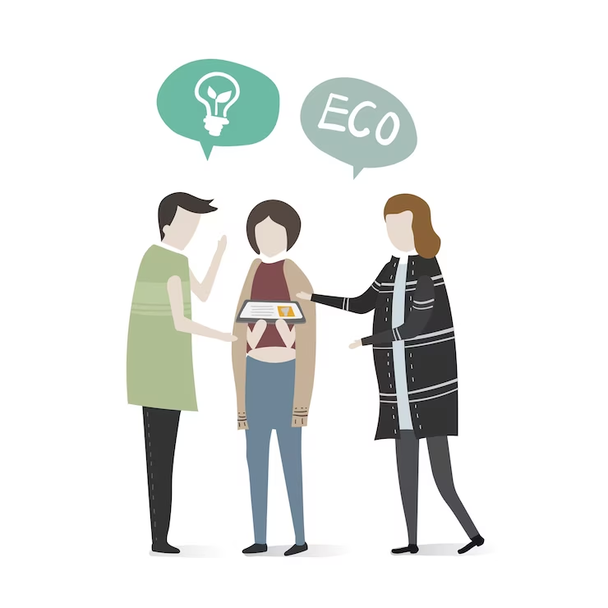 Image Credit What are Future Conversations? Have you ever been on a road trip with family or friends? Unless you have a direction in mind or an idea of where you’re going, you are likely to end up somewhere you didn’t intend; by the time you reach your destination, it might be too late. This analogy is also relevant to climate change. “Future conversations” is a process of developing and implementing ideas about the future that help individuals and communities to create a roadmap for how they would like to live, relate, and work together in a low or zero-carbon world. The conversations also help bring people together. Eco-anxiety can be crippling, but it can also be enabling. Future conversations replace future fears with future hopes, building resilience and creating a collective vision that can be pursued proactively. In the end, it is better to have a positive, proactive vision than no road map at all. Nine Planetary Boundaries Back in 2007, Johan Rockstrom, a director of the Stockholm Resilience Centre, developed the nine planetary boundaries - these are limits that must be met to sustain modern life on the planet. The boundaries include climate change, biosphere integrity, and biochemical flows. 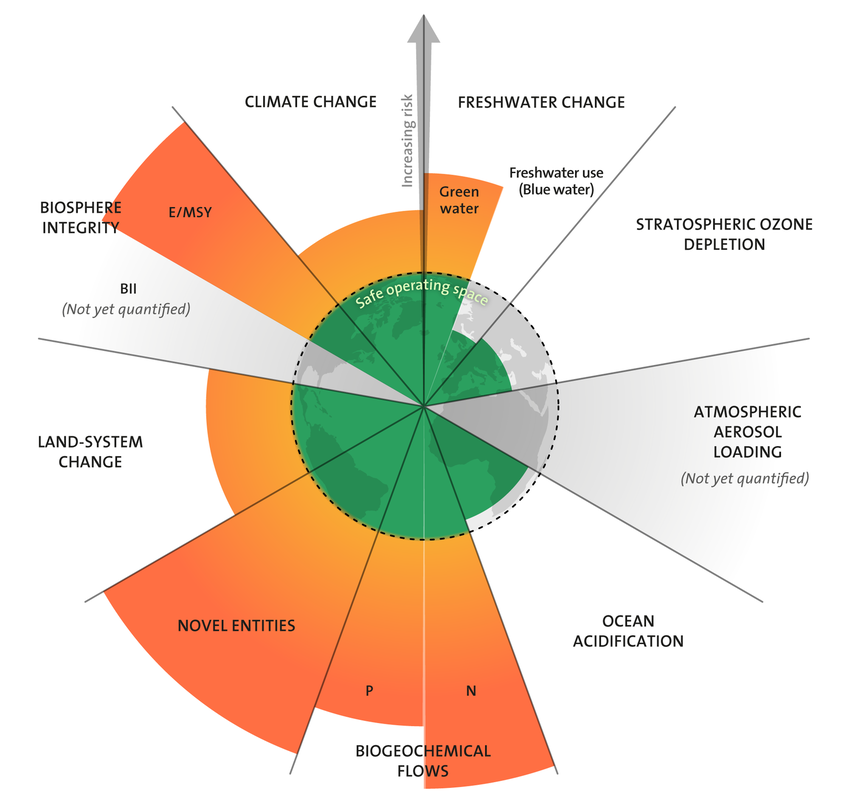 Credit: Azote for Stockholm Resilience Centre, based on analysis in Wang-Erlandsson et al. 2022 More information The “novel entities” planetary boundary encapsulates all toxic and long-lived substances that humans release into the environment — from heavy metals and radioactive waste to industrial chemicals and pesticides, even novel living organisms Biochemical Flows are Phosphorus and Nitrogen - essential for farming Biosphere integrity refers to species loss; e/msy = extinction per mammal species years - technical measurement of extinct rate In January 2015, Rockstum stated that the planet had moved past four of the nine boundaries needed to maintain stability; as of 2022, it is thought to be six. But Rockstrom’s message is not a doomsday one; the planetary boundary system is an efficient way to gauge how well the world is adapting to a sustainable future. Current performance is poor, but systems exist to improve it. Resilience and the Future Bringing the planet back from the brink of disaster and onto a more steady and sustainable footing will require emotional resilience and future conversations. Through decades of inaction and business as usual, the planet has reached a point where the climate is changing very rapidly; species are going extinct, and ecosystems are being lost at increasingly alarming rates. In order to navigate this perilous course through the 21st Century, governments, businesses, and individuals must recognise the realities of climate change and channel any fearful energy into positive action. Climate action takes place at all levels of society, from governments creating greener infrastructure to businesses using less energy and the everyday changes of individuals. At one time, people and nature were inseparable, but then agriculture happened for better or for worse, and suddenly, nature was used as a means to an end. Through the centuries, there have been attempts to reconnect with nature - eg, the Romantic movement in the 18th century - but it is needed now more than ever. Connecting with nature and animals again can inspire our future. Final Thoughts When it comes to climate change, our minds ping-pong between positive outcomes and catastrophic consequences. We know that we want a sustainable, thriving planet to live on, but our human habits are not creating this future - it’s the opposite. A dystopian vision can offer a cautionary tale, but a utopian vision is powerful: it is a collective long-term vision for the future. To continue our analogy, the house fire is upon us. There is black smoke billowing at the top of the staircase, and the walls are becoming hot to the touch, but there is still plenty we can do to save our home. Using the visions, technologies, and creativity of the collective, humans can find a way to collaborate with the planet, reduce consumption, and then build a progressive future. FAQs What are the 5 main effects of climate change? At present, we can notice at least 5 tangible effects of climate change; these include record temperatures, heatwaves and wildfires, hurricanes and flooding, sea levels and melting ice. What will happen if climate change keeps going? If we do nothing to stop climate change, the 5 main effects will worsen and become more extreme. We can also expect there to be food shortages, geopolitical conflict, and displacement. What does it mean to have a Net Zero planet? A Net Zero planet is one that is in balance; it means that human-produced carbon emissions are lessened to the point where they can be reabsorbed by the planet through trees, technology, and the ocean. It is not in the atmosphere. On the global stage, people unite or stand up as individuals with the desire to create a just, sustainable and resilient world. On a societal level, market forces rather than the welfare of planet, people and other living beings are on the agenda and protected by legislation and regulations. The right to extract, process and consume resources - to keep the consumer wheels spinning - seems to run away with us. But people are standing up to demand a world outlined on the principles of nature, not economics. A long chain of actions is at play. Apolitical has listed the 100 Most Influential People in Climate 2022/23 and there exist diverse groups and organisations such as Artists for Climate, Climate Action 4 Jobs, Families for Climate, Fridays for Future, Grandparents for Climate Action Now and Scientists for Climate.
In historical retrospect, persistent rebellion is a known tool to improve human existence, for example labour conditions and the abolition of slavery. In some parts of the world conditions have bettered, in others they have not, and there are activists whose limbs and lives are lost when fighting for a better world. This also happens when protecting nature. Over 1,700 environmental activists killed in decade, states a BBC article and refers to a report from Global Witness. A sense of inadequacy and that I should be doing more, like the brave people who take up the fight against giant industries and governments, creeps into my comfortable home in my safe life. I remind myself that there are numerous other things to do. Since we all need to eat, people have tremendous power with the shopping basket. Supermarkets fill their shelves with demands and what they are used to selling. We have the power to change their habits with ours. Steering clear of meat, products with palm oil, and overly processed foods which have been on a long journey. Instead, aiming for plant based, locally, fresh, raw food. We also have power over other types of purchases: thinking hard about our travel choices and our non-food purchases. With focused attention, as little it might seem, we can support what we wish to see grow out of the crisis. May everyday activism make gentle, insisting waves rippling out as broader efforts towards a caring world. Text by Gazelle Buchholtz, Surefoot associate ‘Carbon credits’, ‘carbon trading’, ‘cap and trade’, ‘carbon neutrality’ and ‘carbon offsetting’. The technical, complicated and distant words might have been created with noble intentions when put into plans at government and corporate levels. But one might question if the various terms come down to finding ways to keep emitting carbon and other greenhouse gases even though the ‘environmental waste bin’ is overflowing. How to find effective approaches to tackle climate change in a jungle of abstract measurements? Photo: Pixabay. Have you ever been offered to carbon offset when travelling or when buying things? Be aware that many of these can’t equal out the polluting effect. We have to view it from a planet view, the ecosystem we all are a part of, not through economic regulations.
“We cannot offset our way out of climate change,” states John Oliver in his satirical program Carbon Offsets. Behind the light-hearted, sarcastic approach the British-American comedian, writer, and political commentator has a serious message: Corporates can’t keep polluting with greenhouse gas emissions under the concept of offsetting. The expression ‘carbon offsetting’ is not only integrated into the corporate world, but we are now getting offers to join in on an individual level. But there’s simply not enough room on the planet for planting ‘good deeds’ like trees, elsewhere on the planet, to compensate for the way we live. The offset system puts profits over the natural world and its dynamics and functions. The equation does not add up, we have to focus on reducing greenhouse gasses. Planetary or economic rules? We have lived on borrowed time for a while, based on the rules of free-market economics and consumption. But how much more deforestation and climate change stoking can we do with one hand, while offsetting with the other hand via schemes often not as efficient as claimed? As Greenpeace writes in the article ‘The biggest problem with carbon offsetting is that it doesn’t really work’ that to be serious about tackling climate change, carbon emissions need to be stopped from getting into the atmosphere in the first place. As they say, “A newly-planted tree can take as many as 20 years to capture the amount of CO2 that a carbon-offset scheme promises. We would have to plant and protect a massive number of trees for decades to offset even a fraction of global emissions. Even then, there is always the risk that these efforts will be wiped out by droughts, wildfires, tree diseases and deforestation.” It doesn’t help that the system isn’t transparent and standardised, “… there is no standardised way to trade carbon credits and no way to verify the compensating activity behind them,” as the article ‘What’s wrong with carbon offsetting?’ in The Week points out. Developed countries’ exploitation of lesser developed countries’ natural resources have been known about for some time. The 2014 article ‘The carbon World Bank and UN carbon offset scheme 'complicit' in genocidal land grabs – NGOs’ states that, “Between 2000 and 2010, a total of 500 million acres of land in Asia, Africa, Latin America and the Caribbean was acquired or negotiated under deals brokered on behalf of foreign governments or transnational corporations.” The article points out flaws in the UN's Reducing Emissions from Deforestation and Forest Degradation (REDD) programme, including ‘financing REDD+ readiness activities.’ In this programme, companies in the developed world purchase carbon credits to invest in reducing emissions from forested lands. This is viewed as carbon emissions’ reductions. ”In practice, however, REDD schemes largely allow those companies to accelerate pollution [via their own industry] while purchasing land and resources in the developing world at bargain prices.” These schemes also reduce indigenous peoples’ access and rights to their forests. Furthermore, the goal of carbon offsetting isn’t functional in practice. According to the article ‘Cop26’s worst outcome would be giving the green light to carbon offsetting’,“… offsetting doesn’t stop carbon entering the atmosphere and warming our world, it just keeps it off the ledgers of the governments and companies responsible. According to the Institute for Applied Ecology, about eight out of 10 offsetting projects rich countries relied on to meet their climate targets under the Kyoto protocol were deemed unlikely to have delivered any climate benefit. Offsetting has been tried and it has failed – to pursue this as a solution now is nothing more than greenwashing and would blow a huge hole in the Paris agreement.” Economic aspects are often given attention in the media and on political agendas. We wish to bring focus on balancing the way humans live with the rest of the natural world, which supports us in so many ways. This could be the interwoven connectedness which is explored in deep ecology, an environmental movement regarding human life as one of many equal components of a global ecosystem. It’s not just a philosophical approach, but it’s the physical world and its laws we live with. A Global Footprint Report from WWF-UK and 3Keel’s concludes, “… the UK must reduce its global footprint by three quarters by 2030 to meet planetary limits.” In the article ‘Carbon offsetting is not warding off environmental collapse – it’s accelerating it’, the Natural Climate Solution Campaign is mentioned as a tool to draw attention to the need of revival of ecosystems in a time of climate breakdown. Focus on reducing emissions where you are Even though it might feel out of our hands as citizens when the frame for climate change actions needs to be set on a societal level, we can still contribute. Being critical, choosing your products and lifestyle carefully and writing your elected representatives, encouraging action, are some of the things we can each do. In Scotland the majority of people acknowledge that climate change is related to human activities, but is that always taken into account when voting? When looking into election material, the standpoint of politicians on the matter is not always clear. Could it be that MSPs and MPs need a reminder from us on why climate change is important for us and our vote? Not only do we vote at elections. What we put in the shopping cart, our means of transportation and where we go on holiday are also choices which influence market forces, and they are directly linked to the amount of greenhouse gas emissions. Net Zero is another term often used on a societal level. It’s “…a state in which the greenhouse gases going into the atmosphere are balanced by removal out of the atmosphere.” (https://netzeroclimate.org/what-is-net-zero/) The Scottish Government has a goal of reaching Net Zero on a national level by 2045. There are governmental supported initiatives such as funding opportunities, but how to get to Net Zero can still seem unclear. It’s a path not yet rolled out but still in the making as we go forward. At Surefoot, when we work toward Net Zero with organisations, the focus is on how to reduce carbon dioxide and other greenhouse gas emissions and to build resilience to thrive at the same time. Read more about Net Zero with Surefoot, or please get in touch if you want to hear more. Please contact us, if you have a story to share about dealing with reducing greenhouse gas emissions in your community and how you strengthen your ability for resilience. On Insights we share opportunities and examples, to inspire and motivate each other in climate friendly activities. Write to [email protected] if you have story to share. Text by Gazelle Buchholtz, Surefoot associate. APPLY NOW! Do you want to improve energy efficiency, thermal comfort AND move to net zero in your community space? HeatHack and The Surefoot Effect are offering a programme for community groups to help plan for the futures of their churches, halls and community centres.
Tackling heat loss and energy efficiency in community buildings, Surefoot working in collaboration with HeatHack is delighted to announce confirmation of an Ingenious Public Engagement Award from the Royal Academy of Engineering. For this project, a small team of people from across Surefoot and HeatHack will be working together to deliver a programme to help UK-based churches and community buildings to understand what a net zero future means for their premises. It will help them not just understand energy efficiency and thermal comfort in difficult buildings, but also to think about how their buildings should be used in their local contexts and how to make this change happen. Groups will emerge from the process with a shared vision, the knowledge and confidence to work well with architects, heating engineers and other professionals, and the evidence of community need that grant funders require. APPLY NOW! We are recruiting community groups and volunteer engineers NOW for sessions starting September – December 2022. Find out more and apply >> More about the programme Key elements
Please contact [email protected] to arrange a conversation about how you can get involved, if you would like to participate either by forming a group or as an assisting engineer. The project is funded by Royal Academy of Engineering Ingenious programme. Besides our food-harvest, we also harvest lots of wonderful moments in the forest garden, and we get to know lots of interesting, kind and dedicated people who come and visit us to learn more about forest gardening. Once upon a time – around 10 years ago – I participated in the first online experimentation with Carbon Conversations facilitated by Pam Candea. That was the starting point of a journey that has changed everything in our lives.
After the Carbon Conversation-sessions I considered if I should translate the concept to Danish and started looking for a Danish organisation to team up with – and found the Danish permaculture association. I never translated the concept, and I am not a member of the permaculture association, but I became, together with my husband Steffen, completely engrossed by the concept of forest gardening, which is an integrated part of permaculture. Carbon Conversations covers – as most readers here will know – the fields of energy in houses, transport, food and commodities. I had already worked a lot with the energy-issues both professionally and in our home, but really got caught by the food-issue. At that time, we had a holiday home in the deep forests of Småland in Sweden, where we enjoyed being so much closer to nature – plants, birds, animals, air, water – than in our city-life north of Copenhagen in Denmark. The idea of combining nature with the production of food simply caught us both. Now we have sold the summerhouse and our house in Copenhagen and bought an old farmhouse, still in Småland but a little closer to Denmark and our children and grandchildren. Here we experiment with all the Carbon Conversation-issues – and with extra energy dedicated to the production of our own food, in a plot for annual vegetables as well as in our 1000m2 forest garden. What is a forest garden? A forest garden is a food producing ecosystem that imitates natural ecosystems, being rich in biodiversity and much more resilient than a traditional vegetable garden where you grow annual vegetables like carrots, potatoes and lettuce. In a forest garden you grow a diversity of perennial food crops mixed in a diverse, polyculture system with several storeys. In the top you have trees with fruits and nuts, next storey houses the berries, then comes the larger perennial vegetables and in the bottom, you have cover plants. All mixed with each other to avoid the risks and disadvantages of monocultures – exactly as in the fringe of a forest. In a fully developed forest garden, most plants are perennial. They are part of a balanced and relatively stable ecosystem that doesn’t start from fresh every year. The plants stand stable with their roots deep into the soil where they participate with fungi in an exchange of nutrients and energy. That makes them much more resilient against heat, drought and wind. Most plants in a forest garden are food-producing and the rest are either insect plants or nutrient collectors. Some (most) of them are very pretty as well – but the purpose of a forest garden is not to look good (like in a flower garden). The purpose is to produce food while at the same time supporting biodiversity and carbon sequestration. The polyculture-mixture of trees, bushes and herbs is important for several reasons. Most important is it to create lots of hiding places and lots of different food sources for many different insects. With a very biodiverse food-producing ecosystem, you get a much more resilient system, with lots of predators to balance the number of vermin. Furthermore, biodiversity is decreasing globally, and we should all do our utmost to provide living spaces and food for as many insects, birds and wild animals as possible – also in our food-production. In a forest garden you don’t have naked soil. In a full-grown forest garden, the soil is covered with plants, and in a developing forest garden, we cover the space between plants with organic material. Naked soil is very vulnerable to drought and erosion, and life in the soil – micro-organisms, fungi and bacteria – has much better chances to live and thrive if the ground is covered with either plants or organic material. The soil stays moist and the organic material composts into humus which contributes to the life of both animals and plants. And carbon in the form of CO2 is sequestrated and stored as different carbon-connections in the stems, branches and roots of the plants and the humus in the soil. Our experiences with forest gardening We started developing our forest garden in 2016 and now only six years later we are harvesting lots of fruits, berries and vegetables, from early spring till late fall. We get many visits in the forest garden by people interested in a more sustainable life and food production. You are also welcome – either if you come to Sweden some day or on our website (unfortunately so far only in Danish – but with lots of photos): https://gammelgaard.se/skovhave/ By Christina Meyer As part of tackling climate change Scotland has set a goal of becoming Net Zero by 2045. Net Zero can sound technical and seem an abstract goal. We will reach Net Zero when the amount of greenhouse gas emissions we put into the atmosphere are equal to the amount we take out of the atmosphere. In short, aiming for Net Zero is about engaging in climate friendly activities - which often are not only healthy for people and planet, but also for the economy, for example when saving energy in your organisation. Our programme Net Zero for Teams will support your journey towards Net Zero.
Net Zero for Teams in your organisation Starting or accelerating your transition to a carbon neutral business may seem daunting. What does operating as a Net Zero business look like for your organisation? Rest assured, with Surefoot’s Net Zero for Teams, your decision-making and transition will be quicker, smoother and more straightforward than you think. As with all successful strategies for change, it starts with you and your team using your expertise to decide what is right for your organisation. How it works Surefoot’s Net Zero for Teams workshops are a mix of information sharing, identifying areas for change and an exploration of possible solutions. In between the workshops, Surefoot supports your team to help finalise the actions needed to achieve their chosen objectives. See more here. Please contact us if you would like to know more. Growth is an outdated term: instead, businesses must focus on sustainability and meeting Net Zero targets. Build a sustainable, resilient business with The Surefoot Effect. Making changes to your business and turning the tide of climate change can seem like a daunting task, especially when you don't know where to start. The Surefoot Effect offers a series of courses, training programs, and workshops to help businesses equip themselves for a more sustainable future. Read on to find out how to make your business more planet-friendly.
Carbon Conversations Chances are you have a carbon output for your business that contributes to greenhouse gas emissions, but it's not as if you can flick a switch and your business becomes sustainable. It takes time and careful planning to work towards Net Zero by mid-century - this is the global aim. With Carbon Conversations, you can begin to discuss the issues at hand and work out how to integrate progressive thinking into your business model. Carbon Conversations at The Surefoot Effect is a series of guided discussions to help you with sustainable business planning. Climate Conversations The future starts today! That's because the choices we make in our present time and our lifestyle practices echo down through the ages. People's choices in the past have caused the climate crisis today, but now, we have an opportunity to build a better future. The Surefoot Effect offers a series of workshops on the subject of future conversations. These workshops aim to equip businesses with the foresight to implement changes that lead to progressive outcomes."Future Conversations" is the smart way to make a difference. Team Engagement Training Net Zero by mid-century is the target and the way to get there through sustainability practices. The next decade is crucial to the success of maintaining a 1.5°C rise above pre-industrial levels; to achieve this, businesses must change their paradigms and balance their carbon outputs. Again, this isn't an easy task, especially if you lack qualified persons in your management teams; but, thankfully, there's an easy solution. The Surefoot Effect offers a Team Engagement programme that provides the tools needed to help businesses operate more sustainably. The Surefoot Effect It is worthwhile to think about our individual contributions to climate change, but it won't be enough to turn the tide and reach Net Zero by mid-century. For that, we need commercial interests to pull their weight as well. The Surefoot Effect is here to help - use their workshops and courses to equip your business for a more sustainable and prosperous future. By James Bollen James Bollen is a digital writer and content creator. He writes articles and blogs in a wide range of niches including business and technology but has a particular interest in conscious living practices, nature appreciation, and creative pursuits. He lives in Glasgow with his partner and sibling cats, Hansel and Gretel. Net Zero is a challenge facing companies of all sizes, but becoming planet-friendly doesn’t have to be expensive; in fact, it can benefit your business We’ve all sat in the cinema eating popcorn watching the latest Hollywood disaster movie. The characters have to contend with a giant city-levelling wave, a twister that threatens a small town or a story of future scarcity with humanity living on the brink of extinction. Unfortunately, these scenarios have become too realistic in the face of climate change, now we are the protagonists.
What is Net Zero? Anthropogenic climate change is the rise in global temperatures as a result of human activity. Most scientists agree that this began in the 19th century (around the 1830s), right at the start of the industrial era. However, evidence is emerging that earlier human activity also had an effect. Humans need energy for heat and light which comes from fossilised carbon. Over time, the earth absorbed carbon from the air and stored it in ground deposits, humans now release it back into the air. Net Zero is the balance between carbon emissions and carbon absorption. The Paris Climate Agreement In 2015, 196 parties signed up to the Paris Agreement, also known as the climate accord, at COP 21. The parties agreed to a climate change target; global temperatures should not exceed 2°C by mid-century with a target of 1.5°C rise temperatures in relation to pre-industrial levels. The Paris Agreement works in 5-year cycles; each cycle has increasingly ambitious targets leading to a reduction in carbon output and stabilisation of temperatures. For this to happen, countries and industries are expected to make adequate changes to their carbon emissions. Make Your Company Planet Friendly Multi-national companies such as Amazon and Microsoft have made ambitious pledges. Amazon says it can reach Net Zero by 2040, and Microsoft aims to do it by 2030. It remains to be seen how realistic and authentic these pledges are, but every business needs to change. It’s not only global giants that are expected to implement changes to reduce emissions; businesses of all sizes can contribute to carbon neutrality. Regardless of your company size, the task is to measure your “climate shadow”, including past emissions, and work towards Net-Zero. The Upside of Company Changes When it comes to business, it’s all about the bottom line, so when managers and CEOs hear about climate change policy, the first thing they ask is, how much is it going to cost? There’s good news, becoming Net Zero involves efficiency changes that ac increase your revenue. Cost reduction and increased efficiency are two of the upsides of Net Zero targets, but there’s more. The next ten years are crucial to turning the tide on climate change, and everyone knows it! Customers are likely to respond to companies making genuine efforts towards Net Zero. The Surefoot Effect Every business is different, and achieving Net Zero requires focus and creativity. There is no one-size-fits-all solution, which is why The Surefoot Effect Net Zero programme help your business to build the Net Zero infrastructure it needs. Contact The Surefoot Effect today and learn more about the dynamic and proven strategies they use to cut carbon in your company. By James Bollen James Bollen is a digital writer and content creator. He writes articles and blogs in a wide range of niches including business and technology but has a particular interest in conscious living practices, nature appreciation, and creative pursuits. He lives in Glasgow with his partner and sibling cats, Hansel and Gretel. To build a better future we need to build a better present! These are wise words, but how can we make a better “present” without having the right conversations? Image credit: www.unsplash.com Are you talking about climate change in your business? Perhaps it’s been kicked down the agenda in favour of growth strategies or commercial processes; if so, it’s time to re-think your priorities. The effects of climate change are becoming more obvious every year and it’s affecting local and global communities. People, nations, and businesses must adapt to survive.
What is Net Zero and why do we need it? We are living in the Anthropocene, an epoch of earth characterised by the dominance of humans on the planet. Humans have impacted the planet significantly, changing the landscapes dramatically and increasing the presence of poisonous gases in the atmosphere. Human existence is only possible because the earth absorbed these poisonous gases and trapped them underground making photosynthesis possible and therefore oxygen. Today, industrial activity is releasing these gases into the air. Find out more with Carbon Conversations. How can I make my business sustainable? At one time (not too long ago) commerce was all about growth, but that was before the realities of climate change started to take effect. Now businesses and customers realise the importance of long term strategies that limit carbon output to Net Zero while maintaining productivity. Commercial sustainability is the path to Net Zero and a carbon-neutral planet - that is a planet that does not produce more carbon than it can absorb. Every person and business has a part to play but it isn’t always straightforward. Learn how to meet Net Zero targets at The Surefoot Effect. How can we overcome eco-anxiety? Eco anxiety refers to the feeling of fear we get concerning environmental destruction and our societies of the future. Eco anxiety can affect people on a personal level, but it can also affect companies - how is it possible to plan for the future when it is so uncertain and perilous? There’s good news! Although eco-anxiety can make us feel powerless, one of the best ways to cope is to take positive action. Understanding the theory behind eco-anxiety and teaching practices to alleviate this is what The Surefoot Effect does best - see their Resilience Workshops. What is a company’s “climate shadow”? Much is made for our carbon footprints nowadays, everyone is encouraged to calculate how much carbon they use in their daily lives and to make changes to reduce that number; while this practice is admirable on a personal level it is somewhat misleading and doesn’t go far enough. The carbon footprint was thought up by major oil companies and directs attention away from the real problem. The “climate shadow” is a more useful idea, it reclaims the language of climate change and offers a more holistic measure of carbon consumption for people and companies. The Surefoot Effect The Surefoot Effect works with communities and businesses on a range of climate change issues. Through workshops, courses, mentoring, and team engagement, you can learn how to equip your business to meet the challenges of climate change. The challenges are both psychological and practical, but they require the right conversations to build a better future. By James Bollen James Bollen is a digital writer and content creator. He writes articles and blogs in a wide range of niches including business and technology but has a particular interest in conscious living practices, nature appreciation, and creative pursuits. He lives in Glasgow with his partner and sibling cats, Hansel and Gretel. COP 26 brought global nations together with the aim of slowing down climate change by mid-century, but is the 1.5 still alive, or is it on life support? David Attenborough spoke confidently and passionately from the podium at COP 26 in Glasgow. He made many strong and insightful remarks, but he left us with a clear intention for when the pageantry was over - will the measure of the concentration of carbon in our atmosphere rise or fall after the summit? The answer is uncertain, but it’s clear that industries can do more to help. COP 26 Agreements After two weeks of presentations and discussions, the curtain finally closed on the UN’s annual climate change summit in Glasgow. So what was the outcome? According to some analysts, activists, and commentators, COP 26 didn’t do nearly enough, but it did agree on some things. According to COP 26 president, Alok Sharma, the summit succeeded in affirming the Paris Agreement’s aim to limit global temperature rises to 1.5°C by mid-century. Successes included talks on limiting coal usage for the first time and rules to govern cross-border carbon credits. COP 26 Failures Despite agreements made in the Glasgow Climate Pact, the summit didn’t go far enough according to some analysts. Alok Sharma called for “phasing out” of coal power by mid-century - at 46% coal is the biggest contributor to anthropogenic climate change, but calls failed. Instead, negotiators agreed to “phase-down” coal usage, but developed nations like India and China will continue to use it in the 2040s. There were also failures with regards to climate justice - the adaptation fund received support, but the funding levels remain woefully inadequate. Action is Needed Promises, promises, promises. Over one hundred nations promised to cut their methane output by 30% by 2030, and 130 nations possessing 90% of global forests promised to reverse deforestation. To find out what your business can actively do, visit Net-Zero at Surefoot-effect. The central problem with COP 26 was not necessarily the sentiment, although some say there was more greenwashing than activism on the part of governments; the problem was (and still is) accountability - will nations act on the commitments they have failed to keep at previous COPs? Future Prospects At present, there is no legal framework for accountability on climate change, which might change when the water starts to rise, but for now, the pledges are based solely on goodwill and cultural pressure. It seems nations are beginning to wake up, but there’s much work to be done. Some commentators point to the lack of young people and women in future conversations, for instance. Still, there is room for optimism. As climate activist Greta Thunberg said “... the real work continues outside these halls. And, we will never give up, ever.” A popular sentiment. The Surefoot Effect It’s no longer possible to ignore the effects of climate change, and your business has a role to play in turning the tide. It’s time to start learning about Net-Zero and building responsibility into your enterprise. If you’re interested in making your business more planet-friendly, visit the Surefoot-Effect and take part in climate change training, mentoring, courses and workshops. By James Bollen James Bollen is a digital writer and content creator. He writes articles and blogs in a wide range of niches including business and technology but has a particular interest in conscious living practices, nature appreciation, and creative pursuits. He lives in Glasgow with his partner and sibling cats, Hansel and Gretel.
In Eswatini, the Southern African country formerly known as Swaziland until 2018, a new movement is taking form to engage young people in a broad range of climate change actions. In a country where flights and overconsumption aren’t options for most people, worldwide climate advice needs to be replaced with initiatives rooted in local reality. Even the Eswatini average carbon footprint is low, there are still actions to take to mitigate climate change effects. Local understanding and education, improvement of infrastructure and engagement of the young people which make up a large part of the country’s population, can support Eswatini towards a sustainable future. As places and people are globally interlinked, we get valuable insight into the state of the world when listening to voices from Eswatini. Supporting the youth in taking action At Surefoot we have talked with Dane Armstrong and Tamika Du-Pont from Eswatini, who are on the steering committee of a youth led climate change network called Hlumisa (which translates ‘to make grow’ or ‘to sprout’). They are also engaged in the Eswatini Climate Coalition which offers a platform for engaging in climate change news and projects around climate justice. This is one of a series where we are speaking with people from organisations around the world, to get first-hand insight into climate change and environmentally friendly actions. Dane, who is an artist who also works in climate adaptation, policy and food systems, explains the need to engage young people in climate change actions, “There is a gap between the governmental goals and citizens participation. With our platform we share news and information, reach out to schools, create workshops, organise marches, and use the creative arts to raise awareness around climate change.” Like other places on the planet, the Covid-pandemic has put many activities on hold. Since there has been a shift to online activities, inequality has become more visible. Internet connections are expensive for many people, and once connected the internet is not always reliable. Their work with high school students aged 15 - 30 years old, including a festival and the pilot of a climate platform, was postponed due to the pandemic, but the activities are again going forward as they look to rebuild and forge ahead. Time for change With a background in environmental science and concern of the social aspects of the environment, Tamika points out the importance of forming a community where different skills come into play, whether it’s about saving energy or creating art. “A small wave of climate change awareness is here, but many more need to know about the consequences and initiatives to build resilience. It should be followed up with governmental actions and rebuilding of the infrastructure. There is a call for optimisation of the national transportation system within the small sized country. We need for example cycle lanes, and a more reliable public transportation system to allow people to participate in greener and more sustainable means of living,” explains Tamika. Recycling is a simple example of a weak spot in the infrastructure. Dane mentions the lack of information and access to recycling (which does exist as an option), even to people who have the means and desire to participate. There are further steps to take when encouraging change on a personal level. Reducing meat towards a more plant-based diet is a challenge due to cultural habits, and there is not much information in circulation about the environmental benefits. Also, embracing agroecological food systems, promoting organic gardens and buying locally produced food and other products would help mitigate the climate change effect. “People should be exposed and encouraged to adopt these possibilities,” states Tamika. The storm to initiate change Heavy rain, extreme storms, heat waves, drought and high temperature in October, which are normally experienced in December, are some of the potential climate change effects already being felt in Eswatini. This is on the back of the extreme drought that was felt in the region between 2015/2016, which thrust climate change into everyone's minds due to the huge personal effect this had on everyone’s lives. Roads, agriculture and livestock are constantly at risk or affected. “Last weekend almost everyone in my neighbourhood was on their roof fixing holes after a heavy rain and hailstorm,” informs Tamika. In a time where it’s difficult to predict what will happen in the wake of climate change, uncertainty has become a weighty actor. “People can see that climate change is happening, but often it has been forgotten on the other side of the storm. But now, the bubble starts to burst,” says Dane and explains about these early days of awareness and action. Discussions, debates and aiming for shared solutions between citizens and the city councils are wanted. When climate change impacts strike, people are often left alone to deal with the effects, for example repairing their houses. If support appears in a sudden climate change disaster, most often it is short-term oriented, like the provision of food supplies. This is important, but there is a demand for a shift in political attitude towards climate change challenges. Empowering agencies already established in the local areas would strengthen the forces already there to meet emergency situations. Furthermore, viewing solutions to climate change impacts not as an expense but as an investment in long-term sustainable solutions would support the future of the country and its people. If such initiatives become part of supporting Africa as a whole, this will make the continent stronger. And again, on an even bigger scale, if we at a global level are concerned about what is happening to various places on the planet, we will all learn more about climate change and what it takes to deal with it. Dane mentions Madagascar as a place with hardly any attention from the global society. The fourth largest island in the world, with animals and plants found nowhere else on the planet, is currently facing a devastating dry season which has left people in starvation. The UN predicts it might turn into the world’s first climate change famine[1]. Sharing is caring It might be a clichéd saying, but nevertheless sharing is caring. And shared communities are also what the young people want to be engaged in, when asking Tamika and Dane what the youth in Eswatini prefer among their offered activities. Platforms for sharing are essential for young people worldwide, and Eswatini is no exception - it is fundamental for change. Space to share knowledge, skills, experience, creative work and ideas. A place which invites young people to think and to be listened to, to be able to deal with challenges in their part of the world, and to be a part of the global community. By Gazelle Buchholtz [1] https://news.un.org/en/story/2021/10/1103712 If you like to follow the work of Tamika and Dane see more here:
www.eswatiniclimate.org, [email protected] Twitter: @ClimateEswatini Hlumisa email: [email protected] Tamika Du-Pont linkedin, Personal email: [email protected] Instagram: https://www.instagram.com/tamikadupont/ From engaging people in nature conservation and creating crafts from plastic waste to inviting visitors to take part in the daily lives of private homes, Eco Hub Africa in Western Uganda strives to empower people and places. With increasing flooding impacting daily life and health of humans and nature, local understanding and knowledge sharing on a global scale are required to create a sustainable life. Ripple effects of climate change At Surefoot we talk with people from organisations around the world, to get firsthand insight into climate change and environmentally friendly actions. An online conversation with Goodman Bwambale and William Bwambale, who are Environmental Management leaders at the organisation Eco Hub Africa in Kasese, Western Uganda, illustrates the ripple effects of climate change. The Kasese district is surrounded by several national parks, among these are Rwenzori Mountains National Park and Queen Elizabeth National Park. The snowcapped Rwenzori mountains, known as mountains of the moon, includes the Margherita Peak which with more than 5100 meter is the highest summit of the Ruwenzori Range in East Africa. Environmental impacts in Kasese carve deep traces in both natural and residential areas. Citizens, residences, hospital and national parks are affected by increased flooding. The river Nyamwamba in the Kilembe subcounty Kasese district floods every year, but the amount of water is increasing, and flooding is now happening outside the typical season. In 2016 there were 25,445 people effected by flooding, in 2020 the number was 120,000 people.[i] The Kilembe Mines hospital, which since 1951 has been a ‘health sanctuary’ for most communities in western Uganda, was destroyed by flooding in May 2020. It’s still not recovered from the effects of the catastrophe. The same day of our conversation, William followed up by email to say that the river Nyamwamba had just burst its banks causing devastating flood in the lowland of Kilembe Valley and parts of Kasese municipality. The Rwenzori mountains is a catchment area of major rivers as Nyamwamba, Mubuku, Lhubiriha and Thako. These rivers have been flooding since 2013 causing loss of life, loss of property and displacement of people in the Kasese district and impacts on the natural environment and ecosystem. “When flooding causes the riverbanks to burst, waste is being transported from the residential areas in the valley into natural habitats, where for example toxic substances pollute Lake George and Lake Edward in the Queen Elizabeth National Park. This includes killing the fish,” Goodman explains. Nurturing the sprouts Goodman points out that whereas burning fossil fuel is the primary source of carbon emissions many places on the earth, a great part of the emissions in Africa is caused due to households’ dependency on woodburning as an energy source. Another environmental problem is plastic waste which is to be found everywhere. The core work of the Eco Hub Africa is activities providing skills to especially children and to mothers with no formal education. Nature conservation, creating crafts of plastic waste, and taking part in training for the tourism industry are central areas. William and Goodman, both with a background in the tourism industry, organise free hosting of travelers and volunteers to provide an opportunity to exchange experience with the local people in private homes. At the Eco Hub Africa, birthdays are celebrated by inviting people to join tree planting and to make crafts of plastic waste. When working with children, Goodman and William witness the development of care and engagement in the natural world which nurtures the future conservationists. However, the persistent, ongoing engagement by many is a crucial factor when you try to make positive ripple effects with sustainable outcome. To grow long-term solutions in web of communities “One thing is to plant seedlings, another is to nurture the growth of the trees,” states Goodman. During our conversation, it’s pointed out that environmentally friendly projects should be founded in holistic perspectives, long-term planning and knowledge of the local area. More people are needed aboard as natural conservationists, to have supportive hands to take responsibility for plants as well for sharing knowledge. It’s not enough to initiate projects, they also need to be adjusted to local areas and supported in the implementation phase until they are up running. As much as global cooperation is important in a worldwide climate crisis, it is essential to know the ground you stand on, no matter where you are in the world. Goodman and William aim to reach out to the broader community, to obtain knowledge sharing across borders and global coordination. “We need joined efforts,” they say when they remind me of the recent flood in New York. As basement apartments were filled with water in no time, at least 14 people were killed in the flooding in New York, New Jersey and Pennsylvania.[ii] As William ends in his updating email, “Climate change does not affect only Africa, it affects the whole World.” Contact William Bwambale if you would like to know more about Eco Hub Africa: [email protected], WhatsApp +256789434763. By Gazelle Buchholtz [i] Source: https://www.infonile.org/en/2021/05/kasese-battles-the-aftermath-of-destructive-floods/ [ii] Source: https://www.theguardian.com/us-news/2021/sep/02/new-york-flooding-state-of-emergency-ny-city-flash-flood-nyc-hurricane-ida-remnants The Environmental Rights Centre for Scotland’s (ERCS) vision is of a Scotland where every person’s right to live in a healthy environment is fully realised. Individuals and communities can get support to use their rights to protect the environment, tackle climate change, improve local biodiversity and make greenspaces healthier and wilder. The aim is to provide help to challenge environmental injustices and advance our human right to a healthy environment. Shivali Fifield, associate of The Surefoot Effect and Chief Officer for the ERCS, explains: “We offer free advice on environmental law, which includes law relating to land-use planning, climate change, pollution control, environmental health, conservation, and any other field, for example transport and energy, to the extent that it impacts on the natural environment in Scotland.”
If you need advice, get in contact by the online form www.ercs.scot/get-advice. This could be on a specific issue, for example a worrying planning application or loss of greenspace in your neighbourhood, or a more general question such as your rights to environmental information. To find out more about ERCS’s work on policy and law reform, check out www.ercs.scot and @ERCScot on twitter. The charity Climate Ed runs workshops with school children to further student engagement by building on the basic climate science message through role play, creative tasks, games and news features. In small groups, the children also have opportunities to express themselves with reflective writing.
Since Easter, Climate Ed volunteer Suzanne O’Donnell has been engaged in delivering five one-hour sessions to about 60 of Year 6 children at the Furzedown Primary School in Wandsworth, London. Suzanne, who is a former teacher and has a lot of energy for networking, enjoys being involved in the creative side of climate action together with the children. She’s convinced that the work will go towards raising a generation of carbon literate children, and through it they will support the foundations for a more sustainable future. Ben Cuddon, founder of Climate Ed, a Carbon Conversations facilitator, and one of the directors of The Surefoot Effect, aims to teach children about climate change and empowers them to take action through the charity’s activities. To do so, Suzanne and other volunteers draw on their own background. For Suzanne it meant that she was able to use relevant examples of recent activism, for example student protest of fossil fuel companies funding at the Science Museum. It was also possible to include a slide showing an environmental art project attended by young children funded by their local council. She’s also keen to use her teaching skills to facilitate questions and let the children to voice concerns which they did with great enthusiasm. To balance the science videos, the activities provided a way to make carbon counting fun by making up a catchy short rhyme or a comic sketch. Unsurprisingly this created quite a lot of laughter among the 9-10 year-olds. This added a playful aspect while focus was the major carbon reductions they and their families can achieve. Questionnaires and presentations pointed to carbon tracker apps for their families to carry the work into weekly accounting beyond the classroom and challenged them on how much emissions participants are able to save. Suzanne thinks the students after the workshop have a good handle on the main causes and impacts. They are aware that flying or owning an SUV both being carbon intensive is a problematic issue; furthermore, some of the kids saw a conflict that those activities are presented as aspirational. However, they are aware that choices are available and can be made about the future that tackle the travel problem. They also pointed out benefits of vegan diets to their friends and parents and making reductions there too. Suzanne taught art and design at secondary level some years ago. Working at primary level is a huge difference she says, because this age group wants to know what’s happening in the world, what's changing and why. It was a great reward for her to get back to her local community. Even with Covid restrictions they’ve proved this approach to be successful from a clarification and practical action point of view. So far Climate Ed has run their programme in schools around south London, with bookings for the coming academic year there’s a huge desire to spread awareness among the school community and build relations with other groups. If you would like to set up Climate Ed affiliate groups in the UK or in other countries the charity would love to hear from you. Feel free to get in touch via [email protected] A few updates on the three Erasmus+ projects. Breakthrough for Resilience The project Breakthrough for Resilience has passed its half-way milestone recently. Partners have collected resilience tools in three aspects: people, places and communities, held a pilot workshop in November 2020, and the Society of Social Psychiatry and Mental Health based in Greece has run three further pilot workshops. Our partners will deliver 3 workshops during 2021, each dedicated to one of the three main aspects of the project. Please join us for our Creativity Builds Resilience workshop in June. Sustainability, Heritage, Health In the project Sustainability, Heritage, Health we have together with partners from Greece, Spain and Lithuania started planning the first routes which will explore heritage in the four participating countries and make connections to environmental issues. On one of the routes, in Athens, you can stroll along marble streets that are thousands of years old to learn about Poseidon, god of the seas, and the current state of the world’s oceans, pollution, how millions of people depend on the oceans for livelihoods, and the ways we have to protect them. On one of the routes in Scotland, you can learn about the visionary thinkers and how the country has become a leader in the transition to a more sustainable future.  Once Upon Your Time In the project Once Upon Your Time for schools, we and partners in Iceland, Spain and Slovenia are researching storytelling methodologies. The goal is to adapt these methodologies and work with children aged 11-16 in schools in the four participating countries. More info to follow as the projects progress.  The three projects are co funded by the Erasmus+ programme. Liz from Surefoot is working in Midlothian on the Penicuik Carbon Challenge project. She facilitated a Carbon Conversations Lent group for a local church community, where the participants aimed to focus on carbon reduction and climate change for Lent this year after their church pledged to a net zero emissions target by 2030. A lot of the participants started the course thinking that big changes to their lifestyle were unlikely. However, the group has really come round to the idea of leaving a legacy of low carbon changes for future generations and have some big changes planned such as installing solar panels and switching to electric vehicles. They also plan to run a monthly low carbon topic for the church congregation with helpful info and advice. The project is funded by the Scottish Government's Climate Challenge Fund. |
�
AboutHere’s a collection of some of our articles which have been in our newsletters or published elsewhere.
Archives
May 2024
|
Sign up TO SUREFOOT NEWS >>The Surefoot Effect equips people, communities and organisations with skills for sustainability and resilience.
|

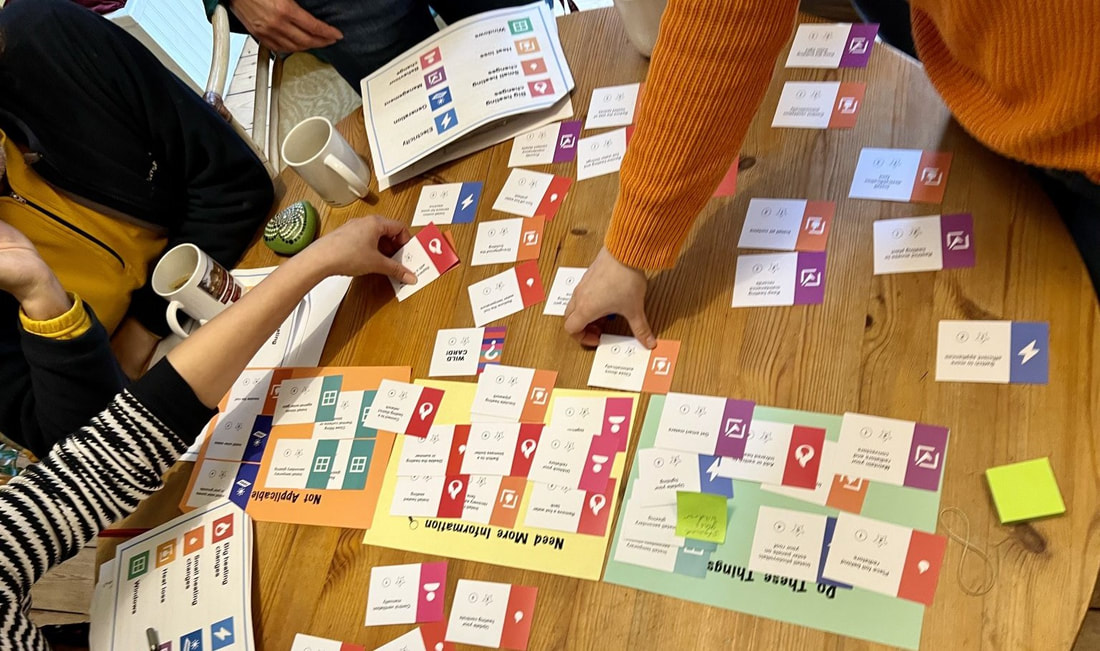

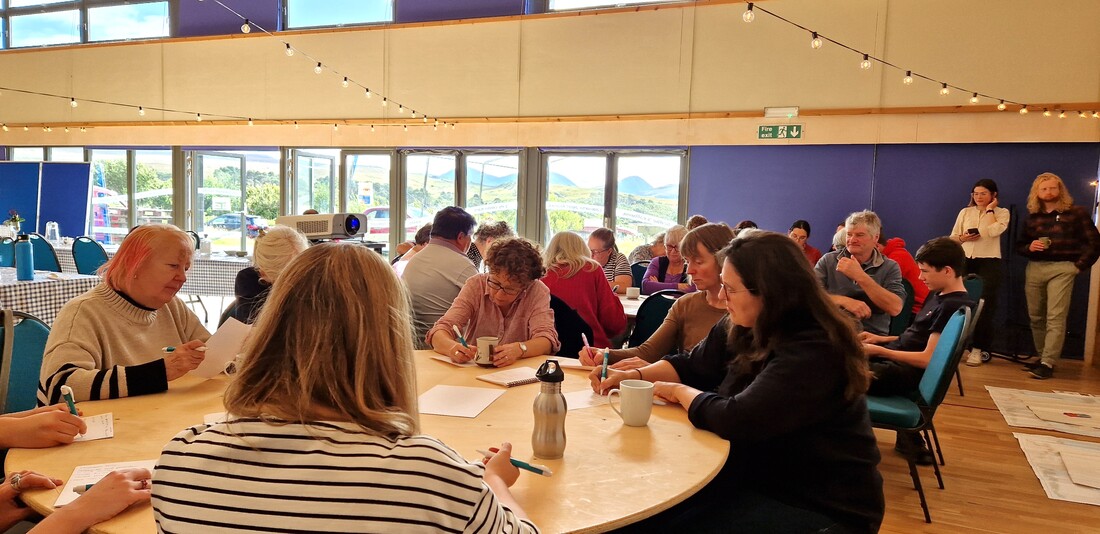
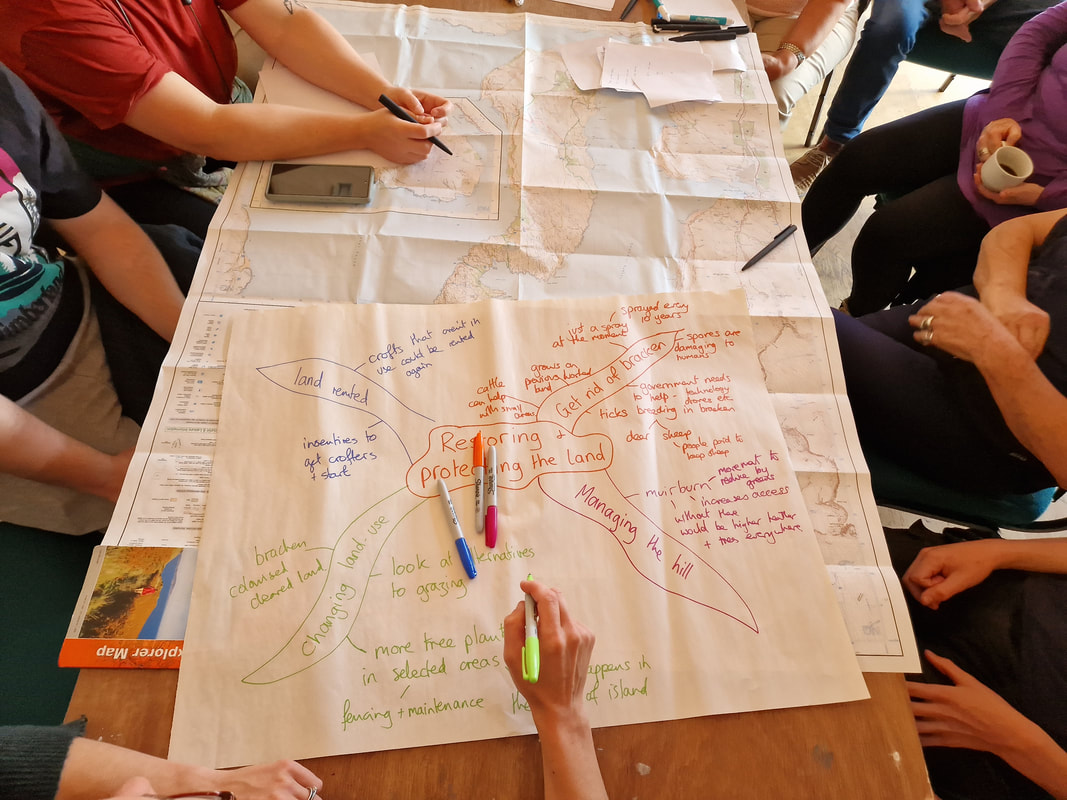
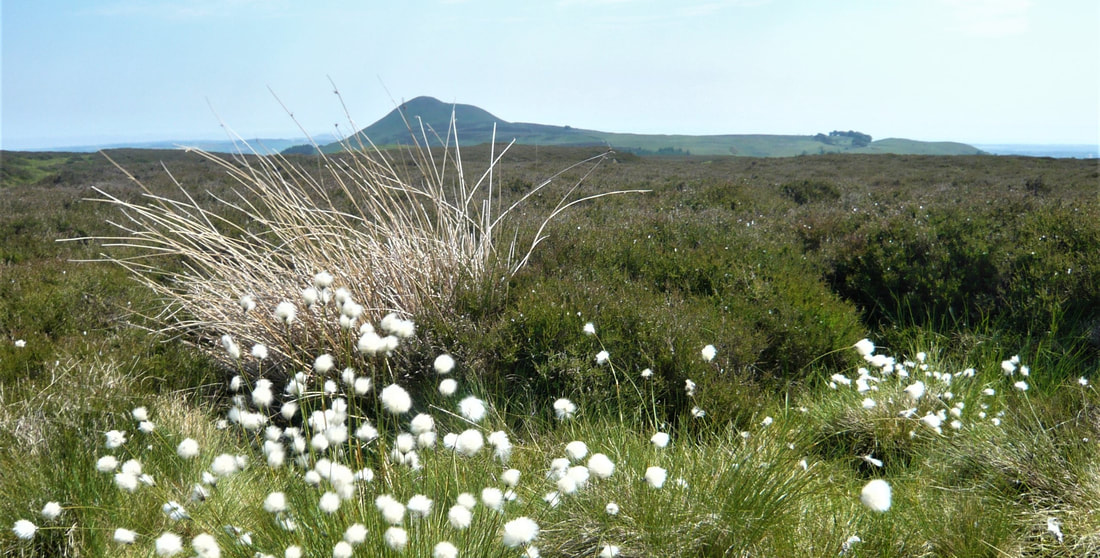


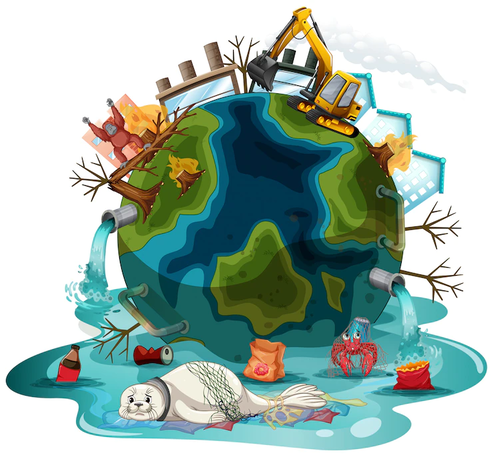
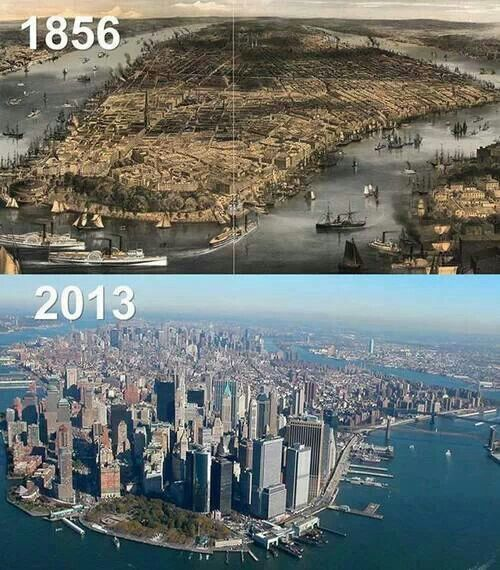
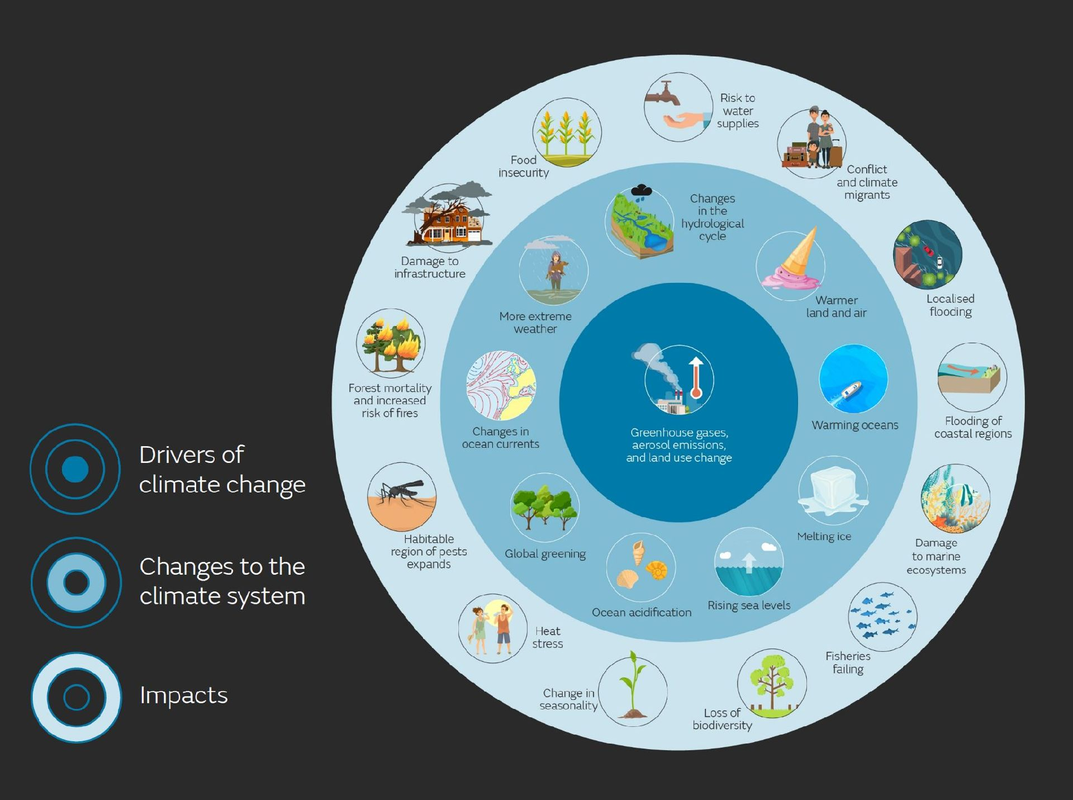
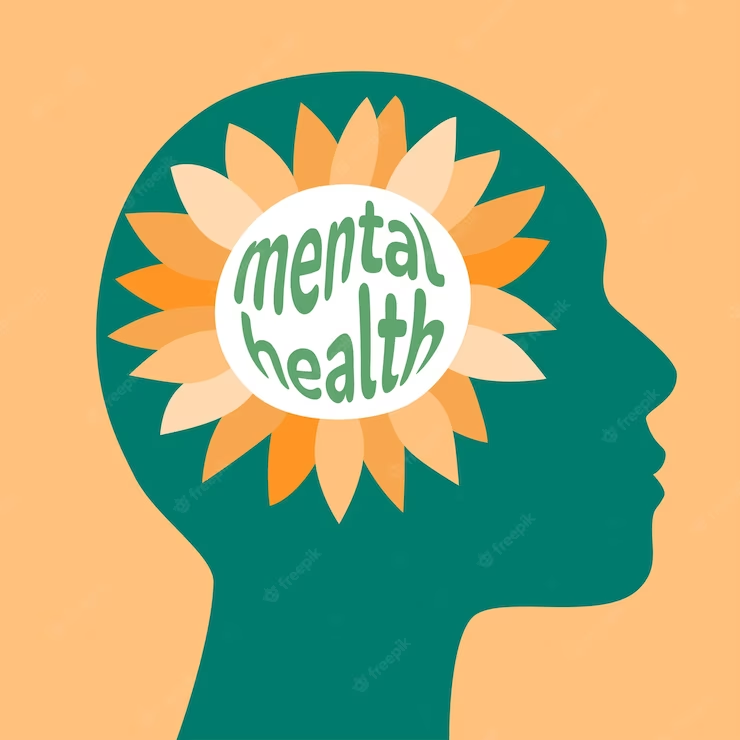
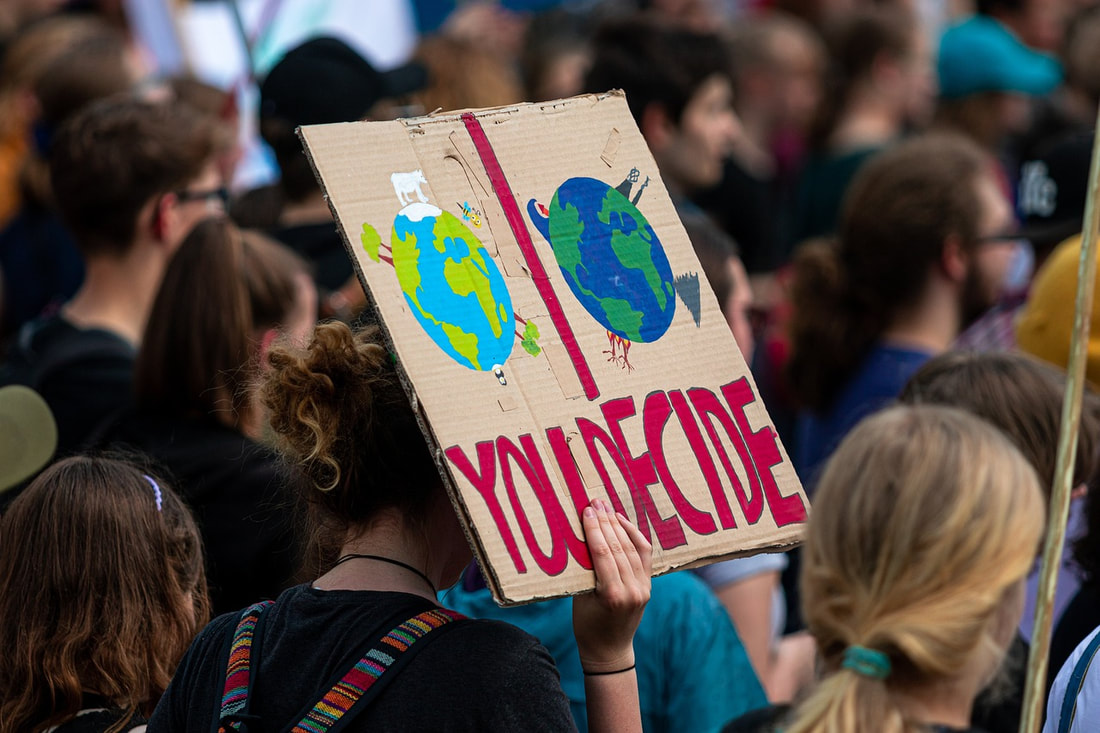
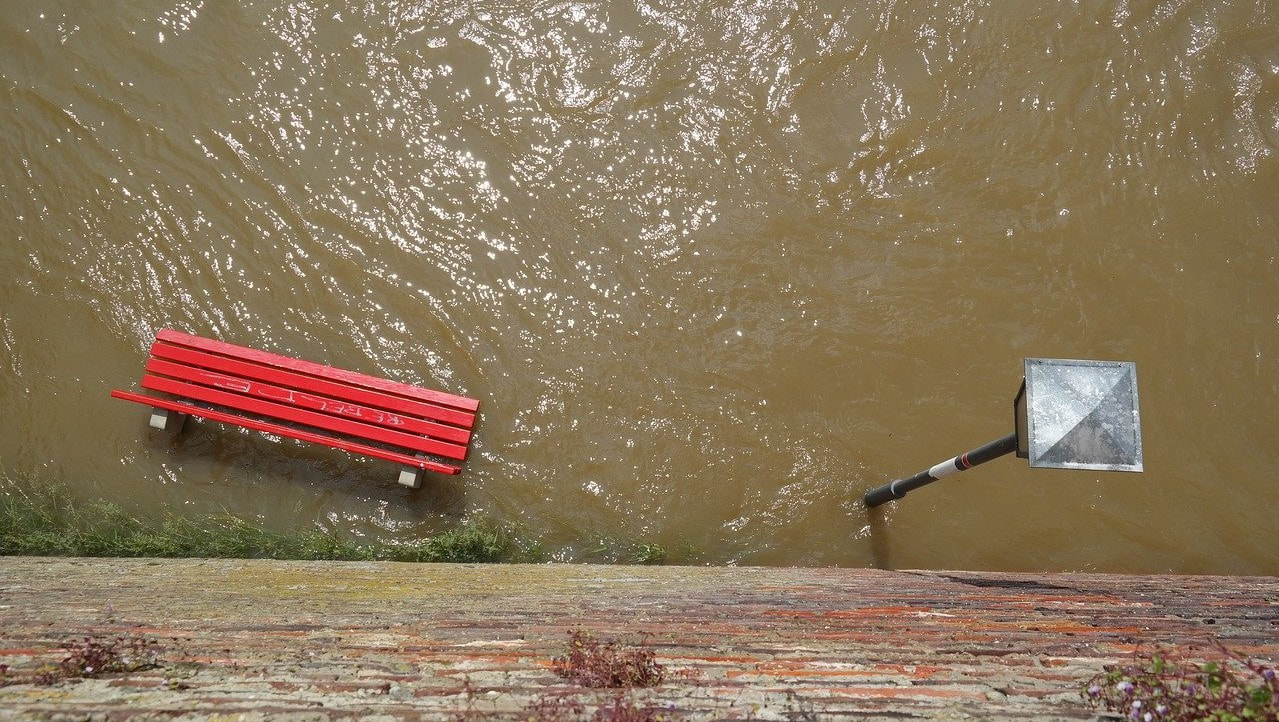
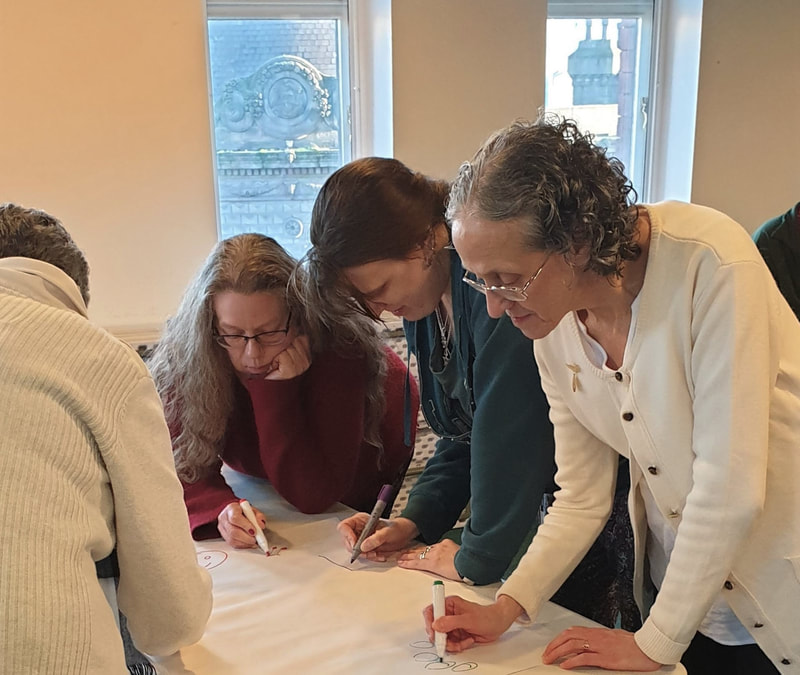
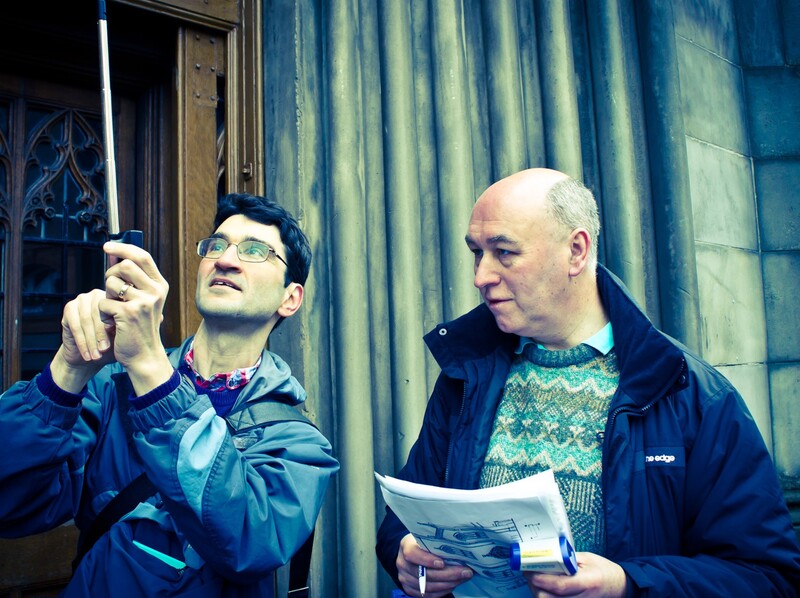
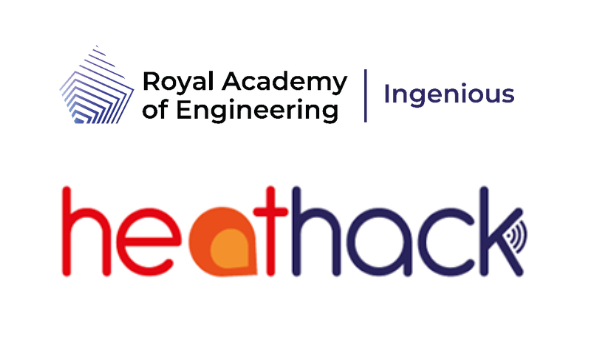
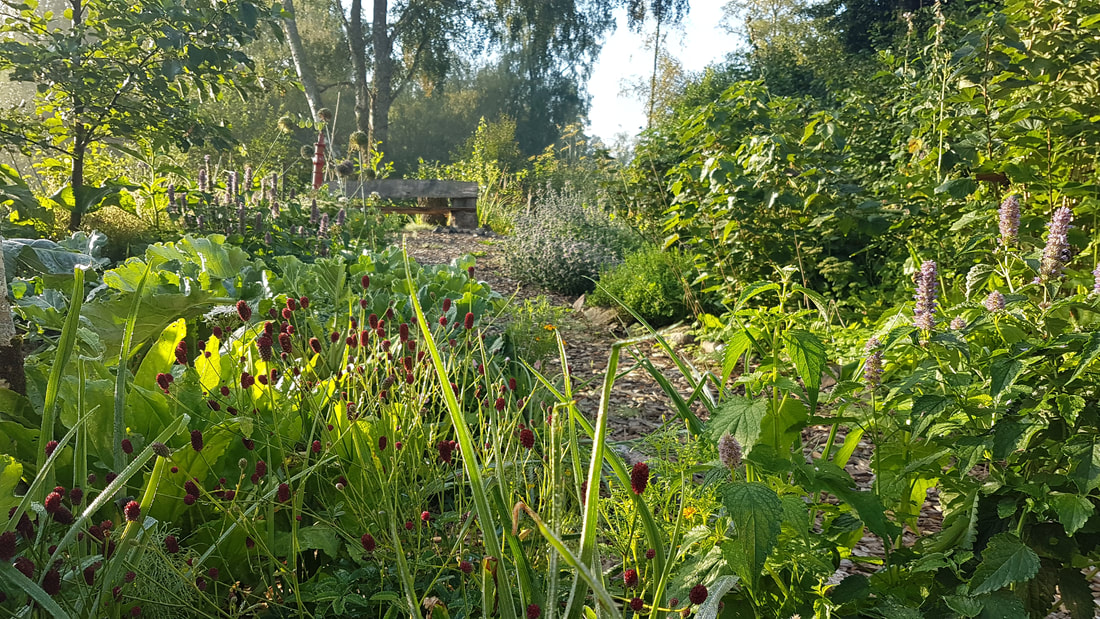


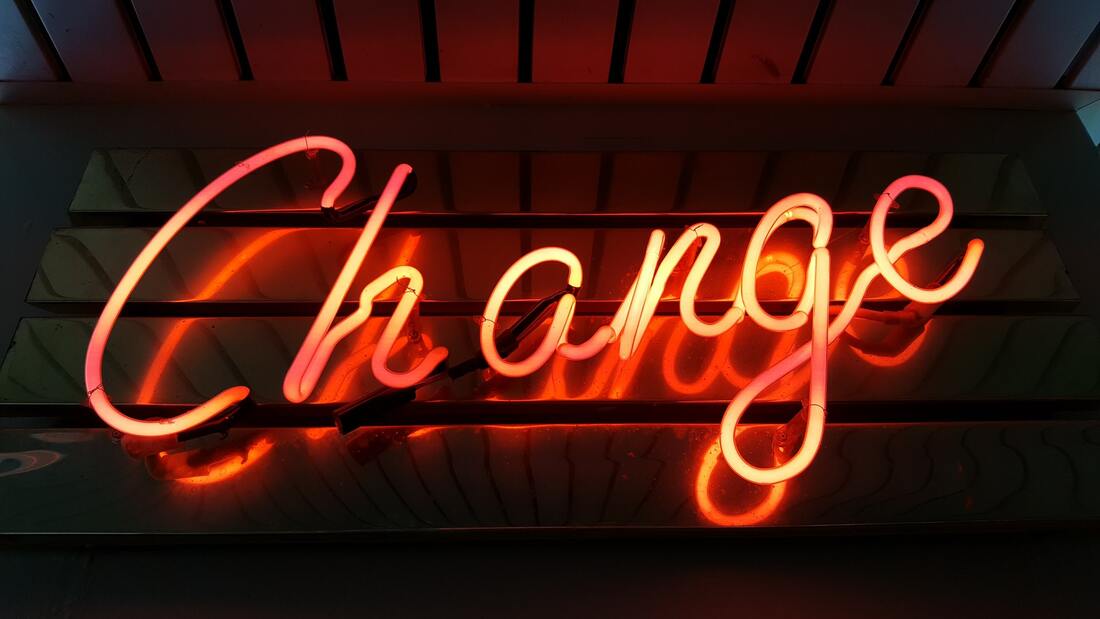

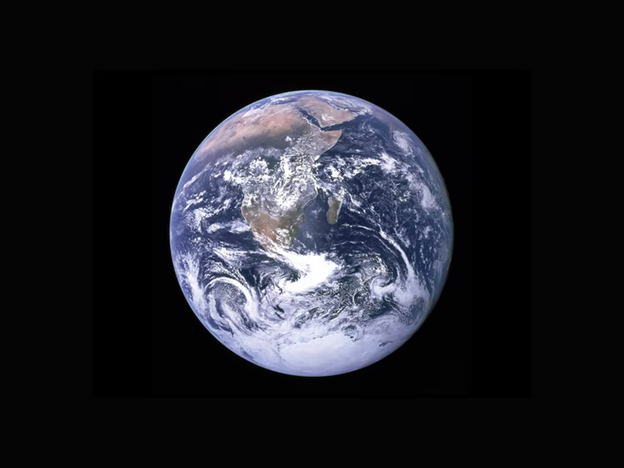
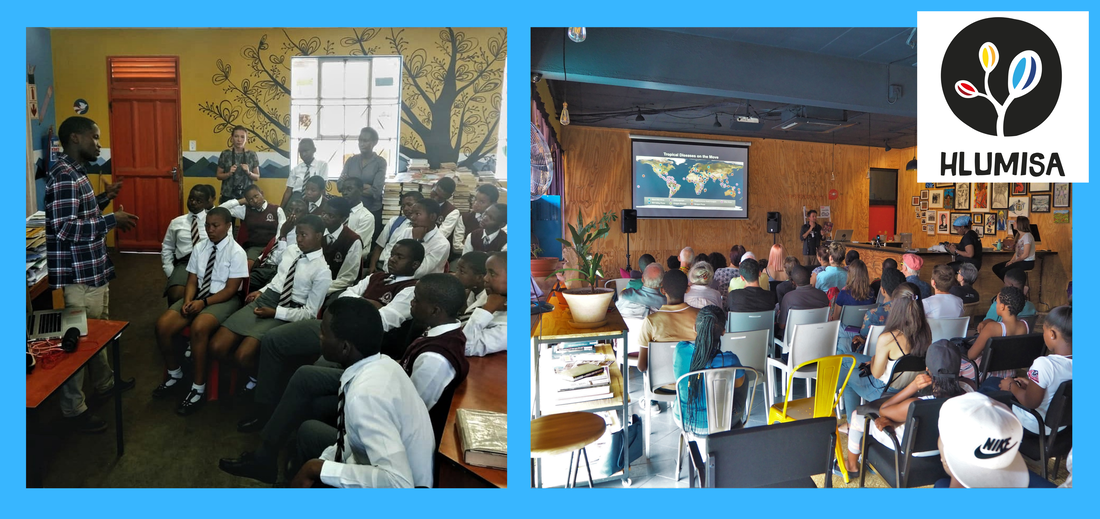
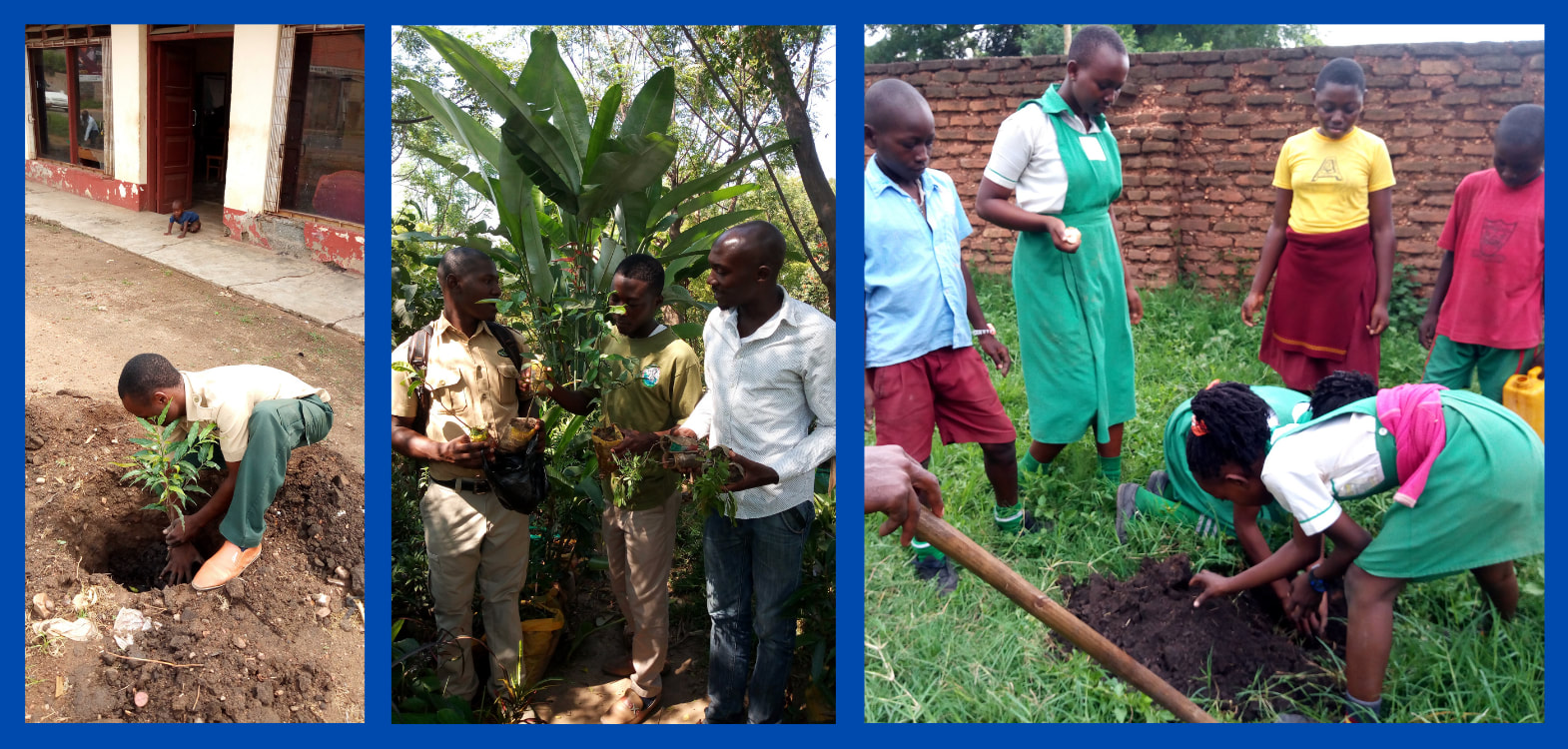
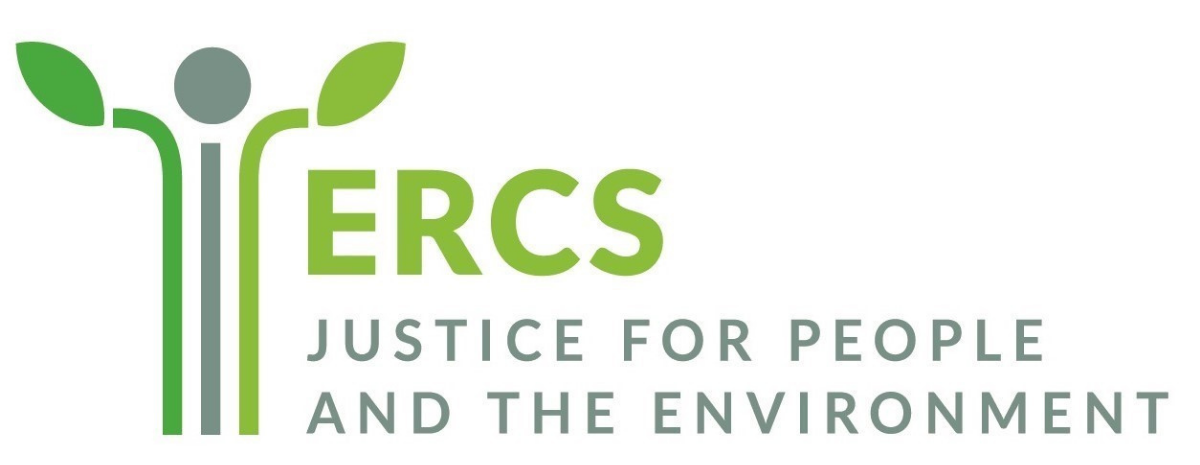
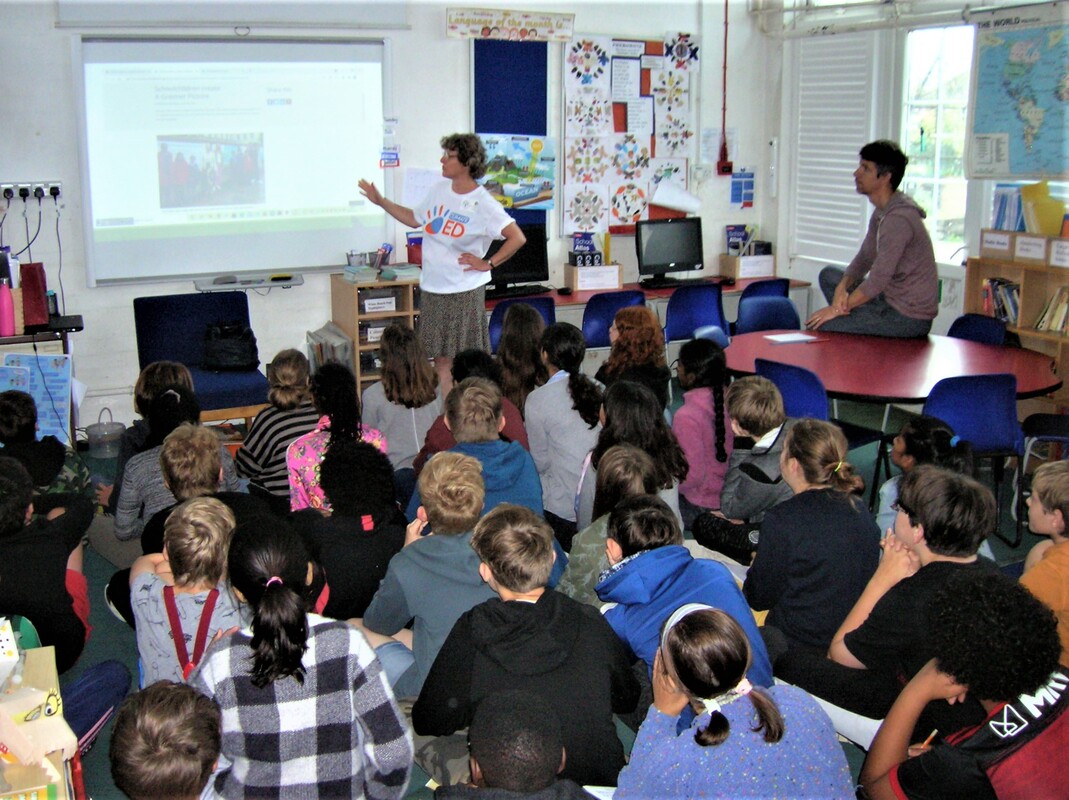
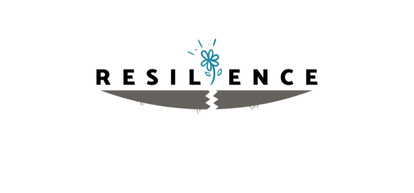

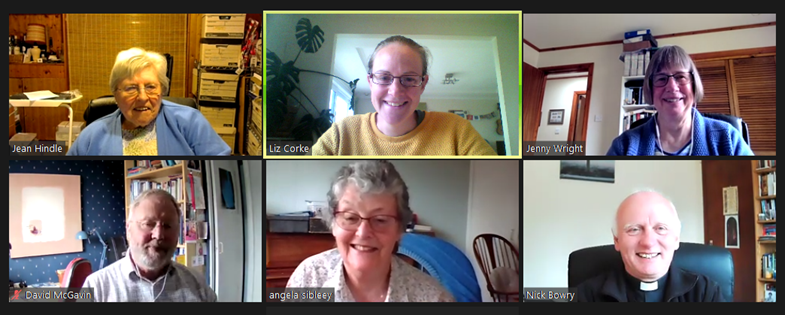
 RSS Feed
RSS Feed
